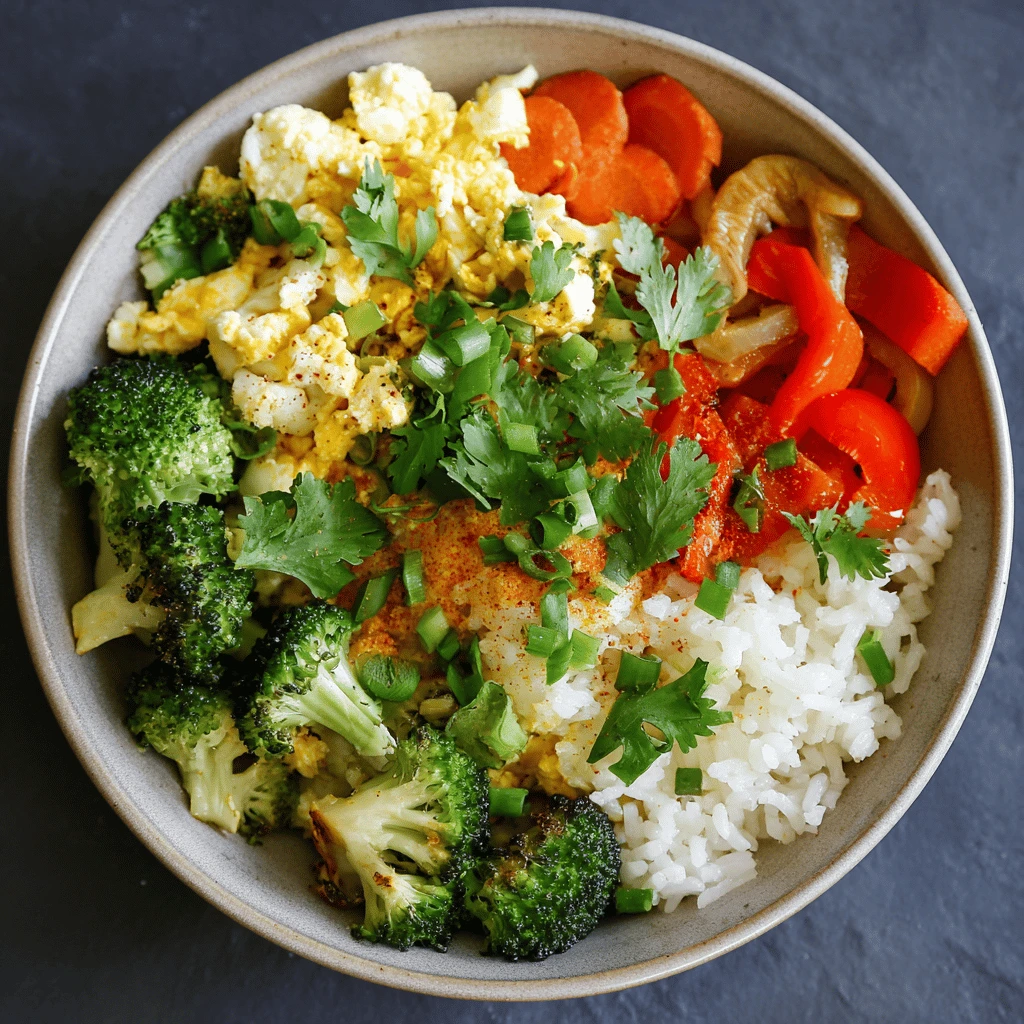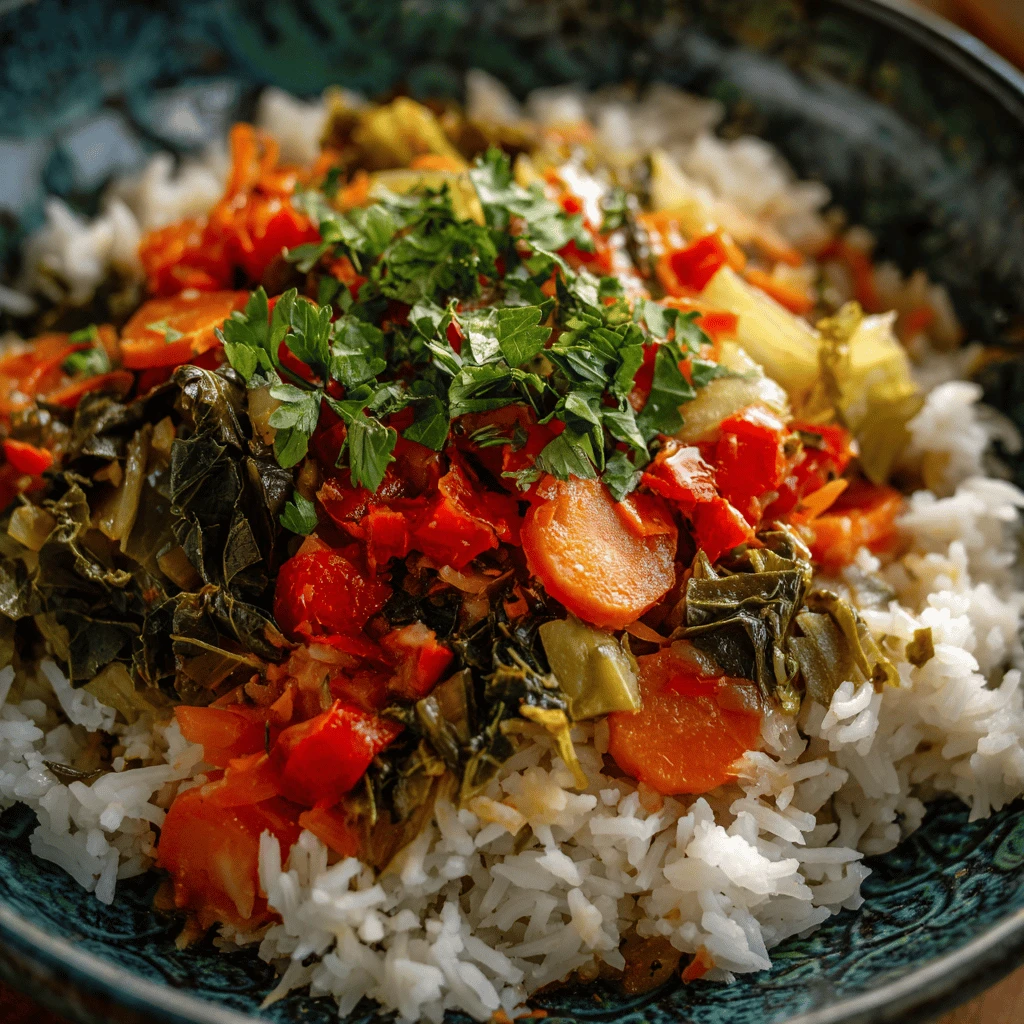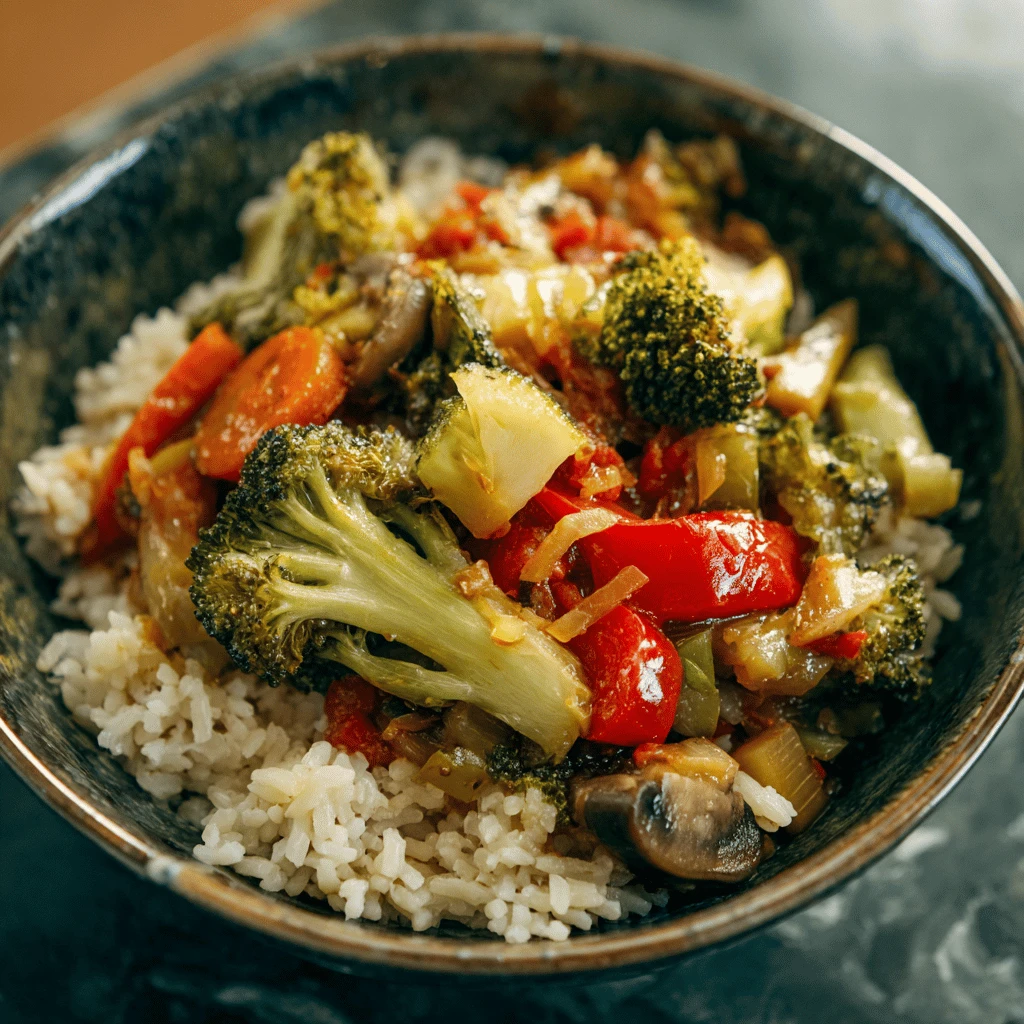Dump and Go Crockpot Vegetables Rice Bowl
Craving a nutritious and satisfying meal without spending hours in the kitchen? Look no further than the “Dump and Go” Crockpot Vegetables Rice Bowl! This recipe is the epitome of convenience – simply toss your favorite vegetables and seasonings into a slow cooker, set it, and forget it. Return to a flavorful, wholesome dish that’s perfect for busy weeknights, meal prepping, or a comforting weekend lunch.
The Beauty of Dump and Go Crockpot Cooking
The appeal of a “Dump and Go” recipe lies in its simplicity. Unlike recipes that require multiple steps of pre-cooking, sautéing, or constant monitoring, this method lets the slow cooker do all the work. It’s a game-changer for anyone with limited time or a preference for effortless cooking. Just layer in your ingredients, add liquid, and let the magic happen.
Crockpot cooking offers several advantages beyond ease. The slow, gentle heat tenderizes vegetables beautifully, drawing out their natural sweetness and intensifying their flavors. The long cooking time also allows the ingredients to meld together, creating a harmonious and deeply satisfying dish. It’s a fantastic way to use up leftover vegetables from the fridge, reduce food waste, and ensure you’re getting a healthy dose of plant-based nutrients.
Choosing Your Vegetables: A World of Possibilities
The beauty of this recipe lies in its versatility. You can adapt it to your liking and use whatever vegetables you have on hand. However, some vegetables lend themselves better to slow cooking than others.
Hearty Vegetables: These are your workhorses. They can withstand long cooking times without turning to mush.
- Root Vegetables: Carrots, potatoes (russet, Yukon gold, or red), sweet potatoes, parsnips, and turnips are excellent choices. Cut them into roughly equal sizes to ensure even cooking.
- Cruciferous Vegetables: Broccoli, cauliflower, Brussels sprouts, and cabbage hold their shape well and add a lovely texture.
- Onions and Garlic: These aromatics form the foundation of a flavorful base.
- Winter Squash: Butternut squash, acorn squash, and kabocha squash add sweetness and a creamy texture.
Softer Vegetables: These vegetables cook faster and should be added later in the cooking process (usually in the last hour or two) to prevent them from becoming overly soft.
- Bell Peppers: Red, yellow, orange, or green peppers add color and sweetness.
- Zucchini and Yellow Squash: These cook quickly and are best added towards the end.
- Mushrooms: Cremini, button, or shiitake mushrooms add an earthy flavor and meaty texture.
- Spinach and Kale: These leafy greens should be added during the last 15-30 minutes of cooking.
Vegetables to Avoid (or Use with Caution):
- Delicate Greens: Lettuce and other delicate greens will wilt into nothingness.
- Very High-Water Vegetables: Cucumbers and celery can release too much water and make the dish watery.
- Frozen Vegetables: While convenient, frozen vegetables can sometimes become mushy in the slow cooker. If using them, add them later in the cooking process.
When planning your vegetable mix, consider a balance of flavors and textures. Aim for a variety of colors to ensure a wide range of nutrients. A combination of root vegetables, cruciferous vegetables, and softer vegetables will create a complex and satisfying dish.
Building Flavor: Spices, Herbs, and Sauces
While the vegetables provide the foundation, the seasonings and sauces are what truly elevate this dish. Don’t be afraid to experiment and get creative with different flavor combinations.
Spice it Up:
- Basic Spices: Salt, pepper, garlic powder, onion powder, and paprika are essential staples.
- Warm Spices: Cumin, coriander, turmeric, ginger, and chili powder add warmth and depth.
- Italian Spices: Oregano, basil, thyme, rosemary, and parsley create a classic Italian flavor.
- Asian Spices: Ginger, garlic, soy sauce, sesame oil, and red pepper flakes add an Asian flair.
Herbs for Freshness:
- Fresh Herbs: Parsley, cilantro, basil, and thyme add a burst of freshness. Add them towards the end of cooking to preserve their flavor.
- Dried Herbs: Dried herbs are more potent than fresh herbs, so use them sparingly.
Sauces for Depth:
- Soy Sauce or Tamari: Adds umami and saltiness. Use low-sodium versions to control the salt content.
- Tomato Sauce or Paste: Creates a rich and savory base.
- Coconut Milk: Adds creaminess and a subtle sweetness.
- Vegetable Broth or Water: Provides the necessary liquid for cooking.
- Lemon Juice or Vinegar: Adds brightness and acidity.
Tips for Seasoning:
- Layer Your Flavors: Start with a base of aromatics like onions and garlic, then add spices and herbs.
- Don’t Be Afraid to Taste: Taste the dish periodically throughout the cooking process and adjust the seasonings as needed.
- Add Salt Gradually: It’s easier to add salt than to remove it.
- Consider the Rice: The rice will absorb some of the flavors from the vegetables and sauce, so don’t be afraid to season generously.
The Recipe: A Step-by-Step Guide
This recipe is a template, feel free to adjust the vegetables, spices, and sauces to your liking.
Ingredients:
- 2 cups mixed vegetables (carrots, potatoes, broccoli, cauliflower, bell peppers, zucchini, etc.), chopped
- 1 onion, chopped
- 2 cloves garlic, minced
- 1 teaspoon olive oil (optional, for sauteing onions)
- 1 teaspoon salt
- 1/2 teaspoon black pepper
- 1 teaspoon paprika
- 1/2 teaspoon cumin
- 1/4 teaspoon red pepper flakes (optional)
- 2 cups vegetable broth
- 1 cup uncooked rice (brown, white, or basmati)
- Fresh herbs (parsley, cilantro, or basil), chopped, for garnish
Instructions:
1. Prep the Vegetables: Wash and chop all the vegetables into bite-sized pieces.
2. Sauté (Optional): For a deeper flavor, sauté the onions and garlic in olive oil in a skillet over medium heat until softened (about 5 minutes).
3. Layer in the Crockpot: Add the vegetables (sautéed onions and garlic, if using), salt, pepper, paprika, cumin, and red pepper flakes to the slow cooker.
4. Add Broth and Rice: Pour the vegetable broth over the vegetables and stir in the uncooked rice.
5. Cook: Cover the crockpot and cook on low for 6-8 hours or on high for 3-4 hours, or until the rice is cooked and the vegetables are tender.
6. Garnish and Serve: Fluff the rice with a fork and garnish with fresh herbs. Serve hot.
Tips for Success:
- Don’t Overfill the Crockpot: The crockpot should be no more than 2/3 full to allow for proper cooking.
- Adjust Cooking Time: Cooking times may vary depending on your slow cooker. Check the dish periodically and adjust the cooking time as needed.
- Don’t Open the Lid Too Often: Opening the lid releases heat and can prolong the cooking time.
- Add Soft Vegetables Later: If using softer vegetables like zucchini, bell peppers, or mushrooms, add them during the last hour or two of cooking.
- Prevent Sticking: Lightly grease the inside of the slow cooker before adding the ingredients to prevent sticking.
Serving Suggestions and Variations
This “Dump and Go” Crockpot Vegetables Rice Bowl is a complete and satisfying meal on its own, but it can also be served in a variety of ways.
Serving Suggestions:
- As a Side Dish: Serve it as a side dish alongside grilled chicken, fish, or tofu.
- As a Main Course: Top it with a fried egg, grilled halloumi, or crumbled feta cheese for added protein.
- In a Wrap: Spoon it into a tortilla with your favorite toppings for a quick and easy wrap.
- Over Salad: Serve it over a bed of mixed greens for a healthy and refreshing salad.
Variations:
- Curry Bowl: Add curry powder, coconut milk, and a squeeze of lime juice for a flavorful curry bowl.
- Mediterranean Bowl: Add sun-dried tomatoes, olives, and feta cheese for a Mediterranean-inspired bowl.
- Mexican Bowl: Add black beans, corn, salsa, and avocado for a Mexican-inspired bowl.
- Asian Bowl: Add soy sauce, sesame oil, ginger, and green onions for an Asian-inspired bowl.
- Vegan Bowl: Ensure all ingredients are plant-based.
- Gluten-Free Bowl: Ensure soy sauce or tamari is gluten-free.
- Add Protein: Add cubed chicken, sausage, tofu, or chickpeas for a protein boost.
Frequently Asked Questions (FAQ)
Can I use frozen vegetables in this recipe?
Yes, you can use frozen vegetables, but they may become slightly mushier than fresh vegetables. Add them later in the cooking process (during the last hour or two) to prevent them from overcooking.
Can I use different types of rice?
Yes, you can use different types of rice, such as brown rice, white rice, or basmati rice. Brown rice takes longer to cook than white rice, so you may need to adjust the cooking time accordingly.
Can I make this recipe ahead of time?
Yes, you can make this recipe ahead of time and store it in the refrigerator for up to 3-4 days. Reheat it in the microwave or on the stovetop before serving.
Can I freeze this recipe?
Yes, you can freeze this recipe. Let it cool completely before transferring it to freezer-safe containers. Freeze for up to 2-3 months. Thaw in the refrigerator overnight before reheating.
Can I add meat to this recipe?
Yes, you can add cubed chicken, sausage, or other meats to this recipe. Brown the meat in a skillet before adding it to the slow cooker.
What if my rice is still crunchy after the cooking time?
Add 1/2 cup of water to the crockpot, stir, and continue cooking for another 30-60 minutes, or until the rice is tender.
My vegetables are too soft. What did I do wrong?
You may have overcooked the vegetables. Reduce the cooking time in the future or add softer vegetables later in the cooking process.
Is this recipe suitable for meal prepping?
Yes, this recipe is perfect for meal prepping. It’s easy to make a large batch and portion it out into containers for lunches or dinners throughout the week.




